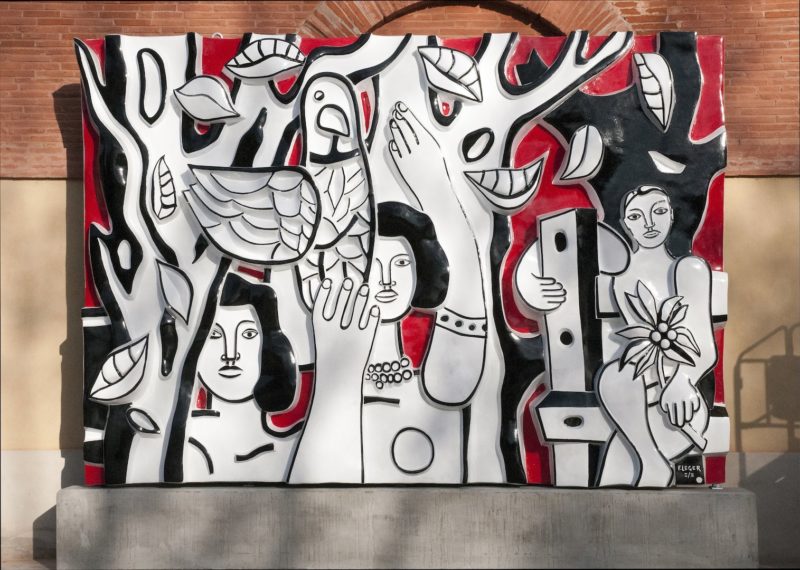
Fernand Léger, tapestries and ceramics
New in the permanent collection
This exhibition brings together ceramics and tapestries that resonate with the works that line the courtyards of the Abattoirs. Fernand Léger is the painter of progress, both social and mechanical. He paints the world of leisure as much as the workers at work. Emblematic motifs such as propellers, gears, and architectural elements remind us of how fascinated the avant-garde was by technological advances.
Without ever ceasing to be a painter, Fernand Léger explored all fields of creation. He collaborated with poets, choreographers, architects, filmmakers, etc. He was nourished by the vitality of his time, which he translated into work that could be seen on stage, on the screen and on the walls of the city.
As early as the 1920s, Fernand Léger was enthusiastic about art "outside the frame", an art that he took to the streets. He asserted the importance of a "mural" art and envisaged a collaboration between painters and architects. He collaborated with the most influential personalities of his time: Robert Mallet-Stevens, René Herbst, Pierre Chareau, Charlotte Perriant and especially Le Corbusier. For Le Corbusier, Léger's painting was the sister of architecture and his paintings themselves "called for a new architecture".
In the post-war period, Fernand Léger pursued this ideal of a collective and popular mural art. In the United States, where he spent the Second World War, he was marked by the construction of skyscrapers. From then on, he continued the study of the spatial force of color begun forty years earlier, through ceramics, mosaics, stained glass and tapestry. "I wanted to mark a return to simplicity by a direct art, understandable for all, without subtlety," said Fernand Leger on his return from exile. The multiplicity of supports, in order to facilitate the diffusion of his works, expresses his desire to popularize modern painting. Committed to social progress and education, Fernand Léger has always defended humanist values.
This exhibition takes place within the framework of the Abattoirs' season around fabric art, "Sous le fil : l'art tissu dans les collections de Daniel Cordier et des Abattoirs" (Under the Thread : Fabric Art in the Collections of Daniel Cordier and the Abattoirs) and "Marion Baruch : a retrospective" (Marion Baruch : A Retrospective) and pays homage to a Abattoirs' collector.
